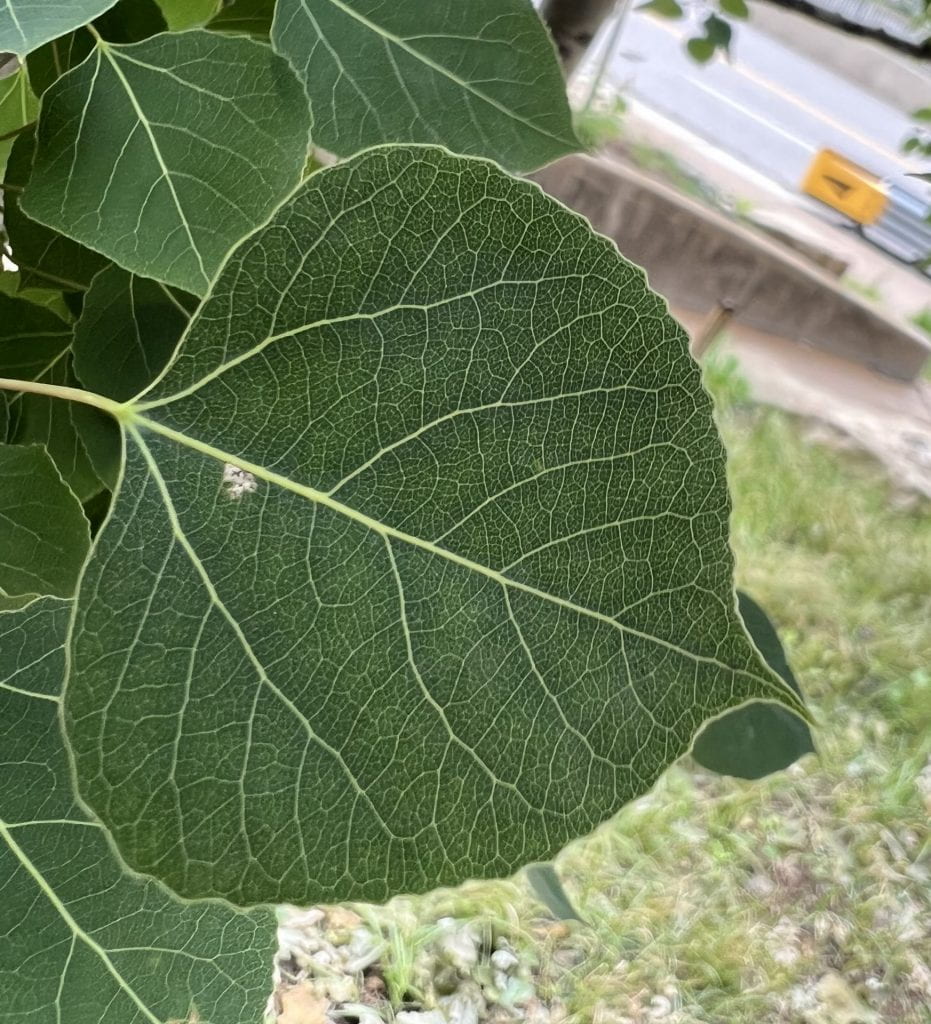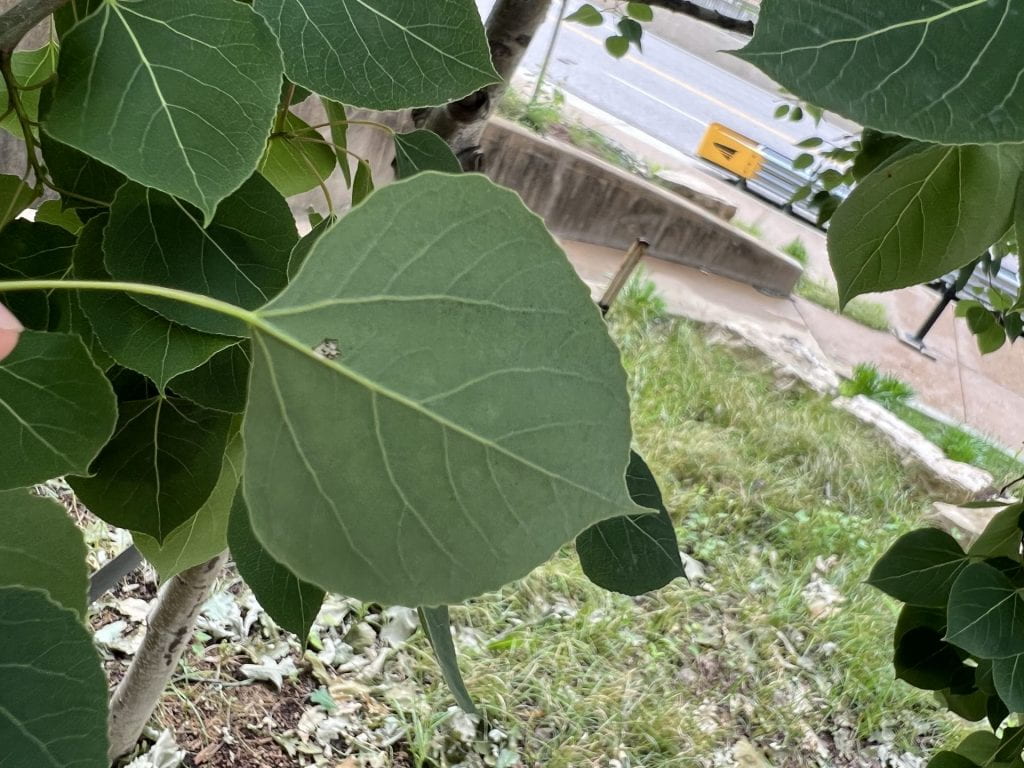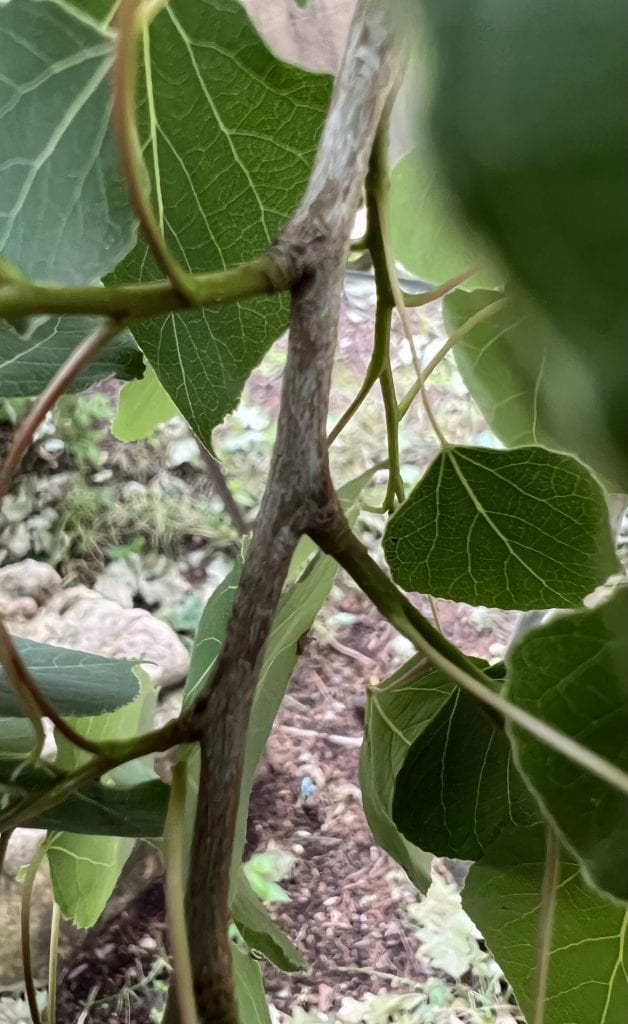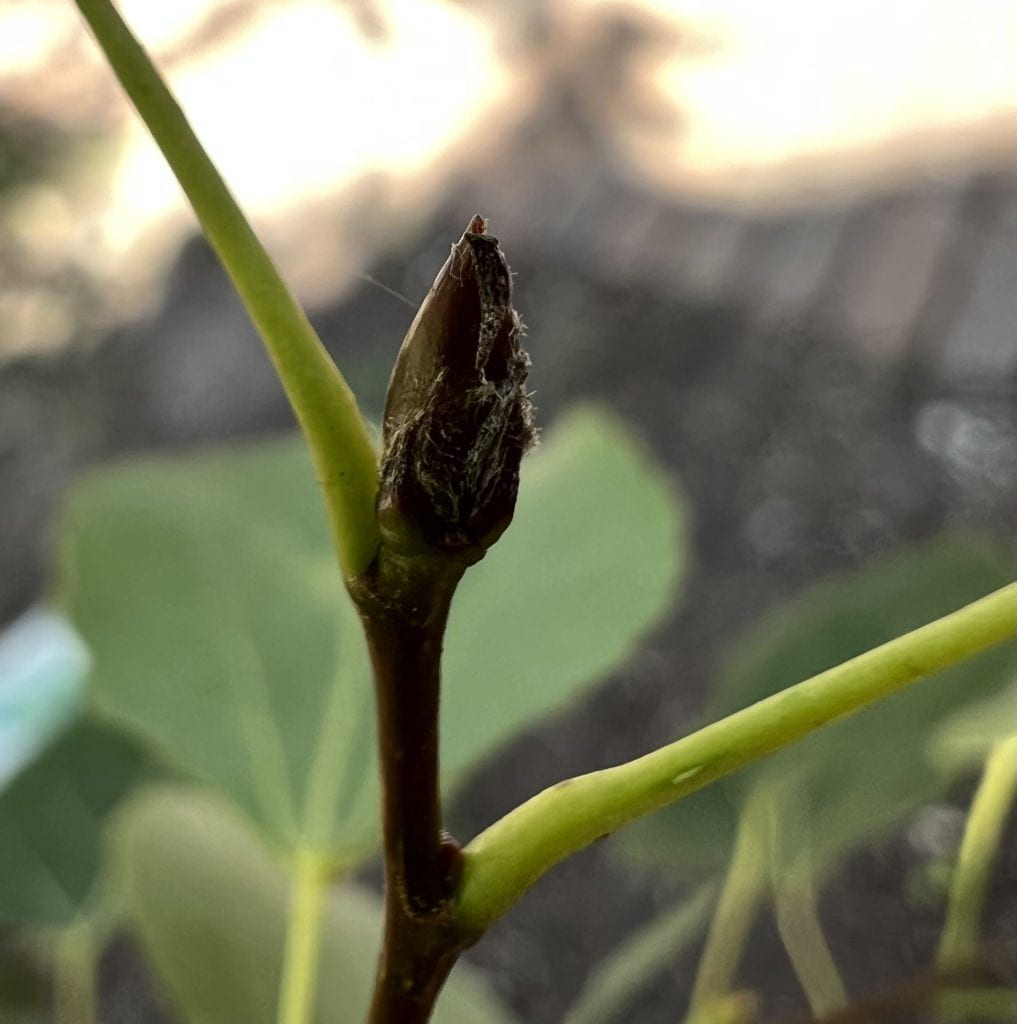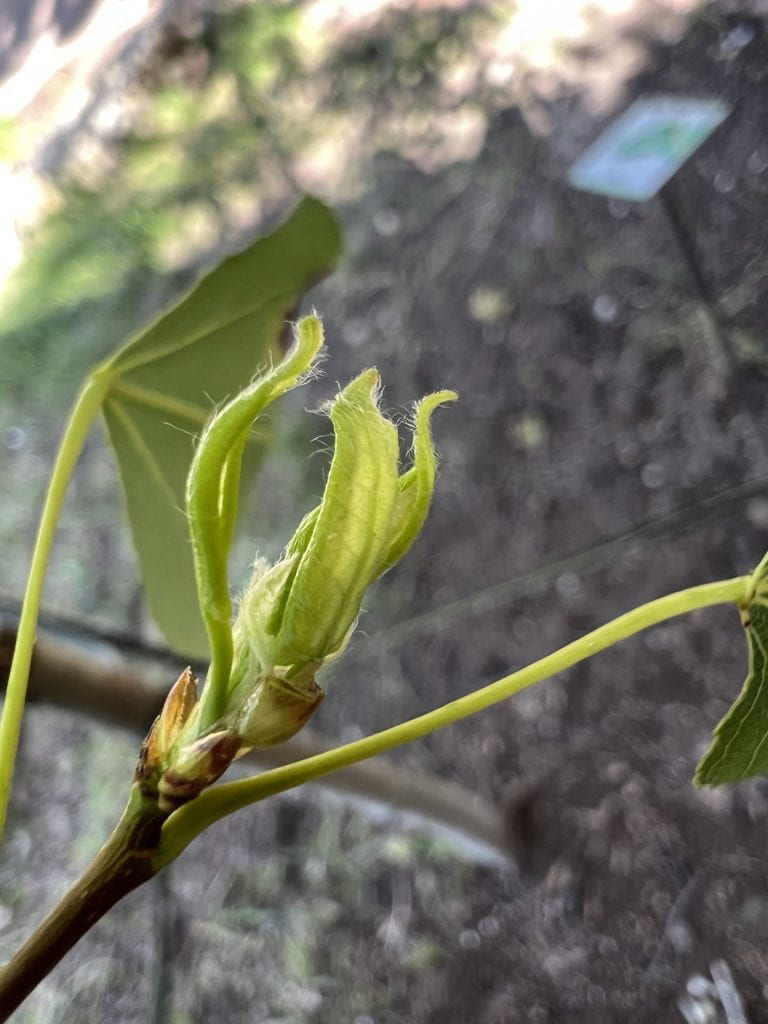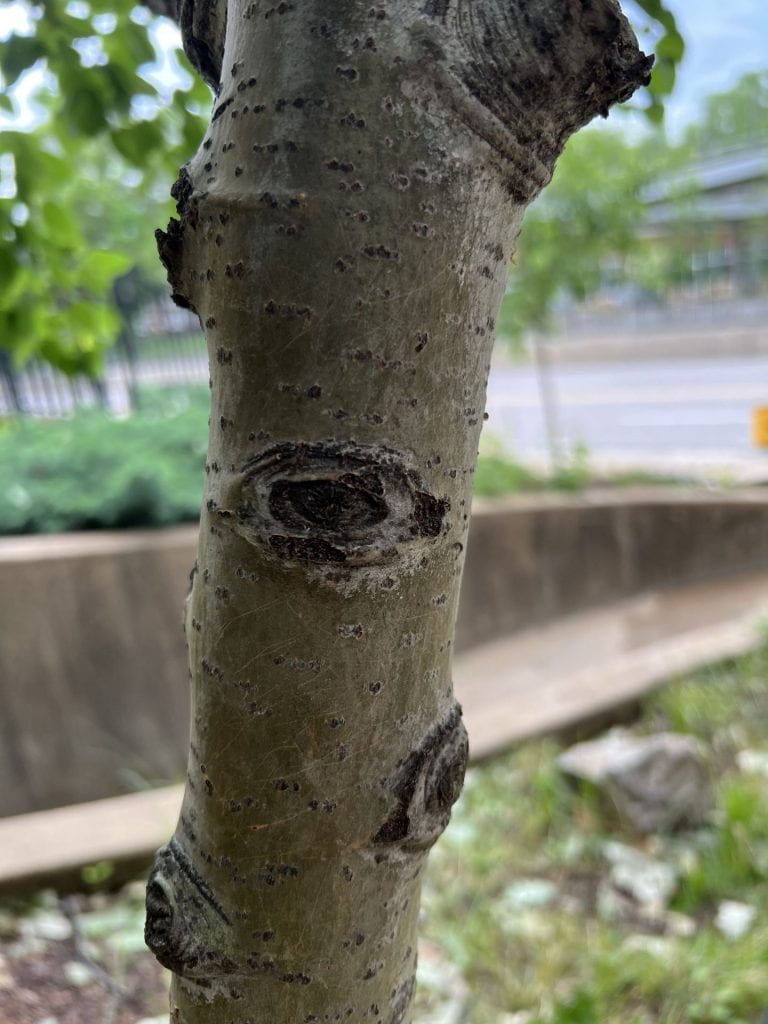Leaf Identification
The leaves of the Quaking Aspen have an inverted bowl or rounded traingular shape, with a nearly flat base curved at the ends and tapering to an extended tip. The leaves are dark above with pronounced pale veins, and visible capillary veins between the axillary veins. In the wind, the leaves have a distinctive flutter.
Twig and Bud Identification
The twigs are dark reddish-brown and smooth. The buds are narrowly pointed, scaled, and usually smooth. The axillary buds curve into the twig like a claw.
Bark Identification
The bark is pale green with lenticels (pores), turning whiter with large irregular dark splotches as it matures.
Fruit Identification
The fruits are small green capsules that grow directly on the female catkins. The capsules are dehiscent and release a singular seed when mature in late spring. However, in the wild, fruits may be rare in many areas, as Quaking Aspens tend to clone vegetatively and one stand may be all male or all female.
Flower Identification
Quaking Aspens are dioecious, so male and female flowers appear on different trees. Both male and female flowers are on hanging white catkins (long, slender clusters of unisexual flowers) with red stamens or stigmas. While the male catkins can be slightly longer, the female catkins have long white hairs along the peduncle. The flowers bloom in early spring.
‘NE Arb’ Identification
This cultivar was bred to be hardier to humid conditions not usually found in the Quaking Aspen’s native range, making it more suitable to conditions like those in much of Missouri. This cultivar also displays golden foliage in the fall.
